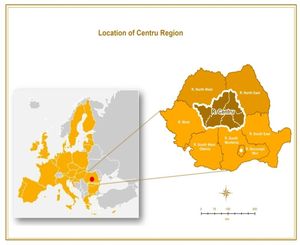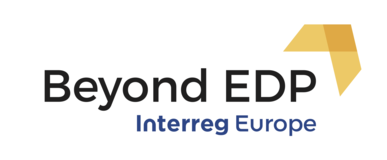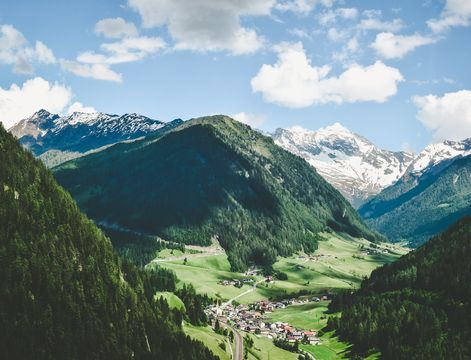Centru Region is located in the very middle of Romania’s territory, bordering 6 out of the 7 other Romanian regions. Covering the southern half of the historic province of Transylvania, Centru Region is made up of 6 counties comprising 57 urban municipalities and 357 rural communes. The topography includes an extensive part of the Carpathian Range and the hilly area of the Transylvanian Plateau. The mountains cover almost half of the Centru Region's territory, including the eastern, southern and western sides of the region.

As of 2015, the population of Centru Region is estimated at 2.35 million inhabitants, with an average density of 69 inhabitants per km2. The urban population represents 58% of the region’s population, Centru Region ranking the 3rd among the other Romanian regions. Most cities have less than 50 000 inhabitants , two cities – Sibiu and Targu Mures – have between 100 000 and 200 000 inhabitants and only one city - Brasov - has over 200 000 inhabitants. One of the most important features of the region’s population is given by its ethnic and cultural mix. Alongside the Romanians making up 2/3 of the total population, there is a significant Hungarian population (almost 30% of the total) and other sizable ethnic minorities (Roma, Germans). Tertiary education is delivered by the 12 regional based universities, comprising 69 faculties and by several branches of the extra region based universities covering a wide range of education fields.
Centru Region has a traditionally industry-based economy with a fast growing tertiary sector over the past 2 decades. Centru Region has a high but declining contribution of the industry to the regional GDP and a significant share of the active population is still employed in this sector. The regional GDP/capita, expressed in terms of purchasing power standard (PPS), reached 15100 euro in 2015 (52% of the 28EU average), considerably higher than 10 years ago. Main driving factors which have to be mentioned in relation with this development: exports (5.5 fold higher compared to the 2001 amount), foreign direct investments (2nd Romanian region in terms of FDI amounts) and a fast growing SMEs sector. Over the past few years, a revival of the regional industry sector has been underway, with automotive, aeronautics, agro-food and ICT as its leading industries. On the other hand, one of the challenges some economic sectors are currently facing is the shortage of skilled workforce.
The tertiary sector has become the biggest contributor to regional GDP (53%). Transportation sector, communication, financial intermediations, trade and tourism are among the fastest growing branches of the regional economy. According to the official statistical data, Centru Region became the most attractive region of Romania, in terms of touristic flow: 2.34 million people accommodated and 5.0 million overnight stays (2015).
New forms of economic cooperation and new networks and catalyst entities have been established at regional level with some promising clusters actively involved in various economic areas such as: agro-food, bioenergy, automotive, aeronautics, wood processing, textile & clothing, balneary industry, ICT, medicine, aeronautics.
Centru Region started the elaboration of its RIS3 in 2014 and one year later this strategy was approved by the Regional Development Board. Currently, our efforts aim at putting in place a reliable mechanism for implementation and monitoring and for this purpose we set up the Regional Consortium for Innovation in December 2016.









